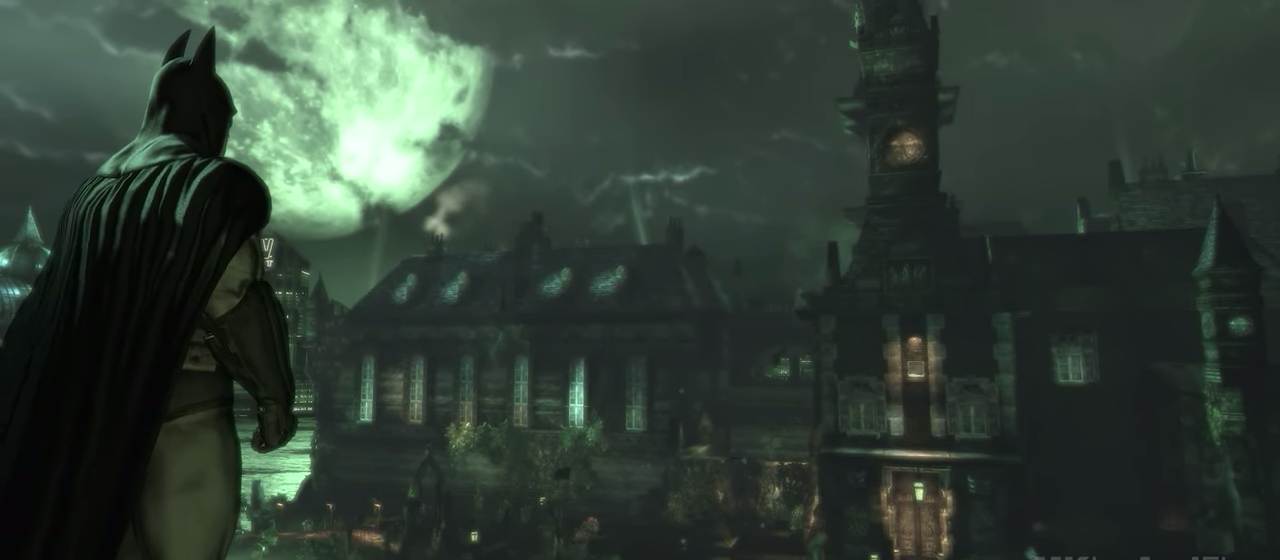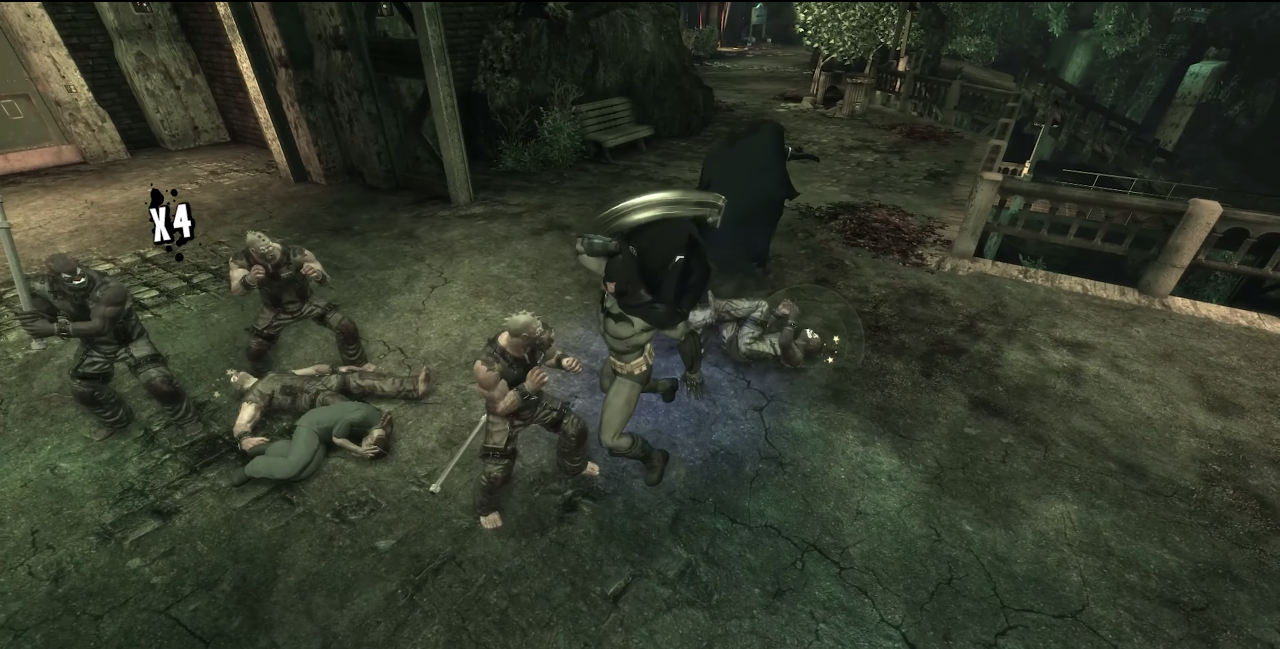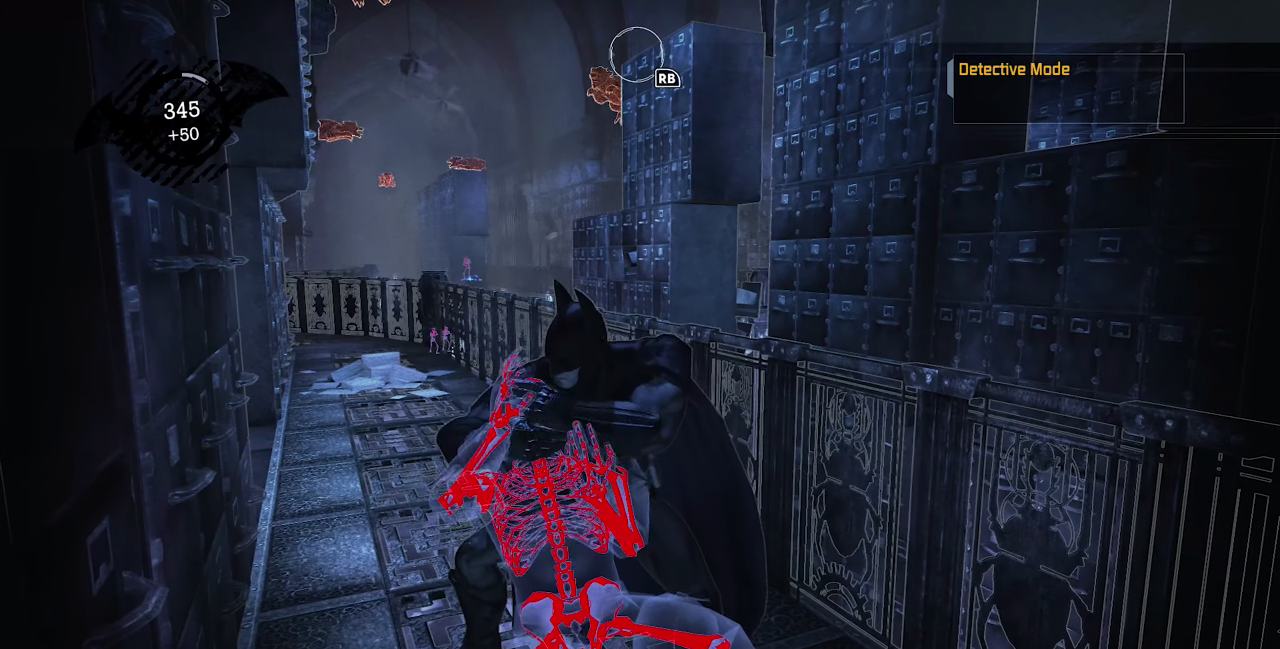

“I just wanted to bring down your grim facade and for once let you see the world as I see it, giggling in a corner and bleeding.”
As I played through Batman: Arkham Asylum for the first time, I came to a very odd realization—that it is probably the best rhythm game ever made. There is much more to it, of course, but the carefully crafted combat system has more in common with games like Guitar Hero than it does with other third person beat ‘em ups with similar looks. In button-mashing games, fighting through a mob of goons is usually a chore because it’s either easy and tedious, or difficult only due to sheer numbers. In Arkham Asylum, the challenge lies in getting into a fast-paced flow that allows you to string combos together which in turn opens up special moves. Your fingers will be pressing a half dozen different buttons in different combinations to achieve an unbroken flow of punches, kicks, throws, takedowns, counters, evades, and stuns. This is a stark contrast to the one or two buttons that usually constitute the attack options in a standard brawler. It took me a few hours of engaging in fisticuffs with a button-mashing mindset to realize that I wasn’t doing things correctly, but once it clicked the game really blossomed for me. But the combo-heavy combat is only a portion of what you’ll do in Arkham Asylum—the rest of the game is pretty much just as great.
In addition to the confrontational combat sections of the game, there are also “predator” stages, where you will stealthily move about in the shadows and swing around conveniently placed gargoyles to silently clear a room full of bad guys. There are many options for doing this—inverted takedowns, silent takedowns, arranged mishaps with explosive gel, pulling the floor out from under people. As you patiently take down these henchmen, the Joker—who sets the story in motion by essentially taking over Arkham Asylum and then monitors your progress throughout the game—will hilariously pester his own hired guns and actively root for Batman at times. Throughout the game you’ll unlock a number of gadgets to aid in fighting and exploration—the Batarang, explosive gel, the Batclaw, etc.

Some of the gadgets, like the triple Batclaw, the cryptographic sequencer, and the line launcher, grant access to previously inaccessible areas. Arkham Asylum is an open world game, and thankfully, Rocksteady kept that open world map compact and densely packed rather than sprawling and sparsely populated. There are 240 collectibles to gather, some of which are hidden in plain sight but others that require some Tomb Raider esque platforming. These clues will unlock character bios and the like but they also unlock small maps, accessible from the main menu, where the freeflow combat and predator style gameplay are set up with specific goals—high scores for the freeflow missions, and specific challenges—e.g. take down three henchmen with a single Batarang—in the predator missions.
Pushing Arkham Asylum even further toward greatness is its atmosphere. It’s dripping in Batman lore, with many of the collectibles being linked to audiotapes or visual evidence. This immersive style of gameplay, where you’re frequently coming across story snippets through exploration, which set the tone of the story and flesh out the history of the residents of Arkham, reminded me of the similarly enthralling Bioshock. As it turns out, producer Nathan Barlow actually cited the game as a primary inspiration for Arkham Asylum. Many classic Batman villains make an appearance in the flesh, and essentially all of the rest have character bios. The game’s main antagonist is unsurprisingly the Joker, and he is brought to life magnificently by Mark Hamill. Hamill, who famously voiced the character in Batman: The Animated Series, is joined by fellow DC Animated Universe alumni Kevin Conroy as Batman and Arleen Sorkin as Harley Quinn. You’ll also face off against Bane, Killer Croc, Poison Ivy, and Scarecrow. The story and peripheral game of collecting all of The Riddler’s clues are fun and touch on a lot of common Batman themes. The story, which takes its inspiration from Grant Morrison’s Arkham Asylum: A Serious House on Serious Earth, is serviceable but will probably not leave a deep impression unless you’re very new to Batman. But if you like Batman you certainly won’t dislike the story, and the saturation of Batman’s history in the game world fills things out nicely.

There are a few weak spots. While the stealth and combat are perfect for someone looking for a bit more sophistication than this type of game typically offers, the boss battles are not very hard. Even when you must fight a “Titan” version of Bane, the method used to defeat him is the same one you’ve already figured out how to perform on generic enemies. There were a few instances, all connected with Scarecrow, when the game pulls some silly meta tricks, such as blacking out your screen, that reminded me too much of Metal Gear Solid for my liking. But really these things are incredibly minor, and do not really detract from the magnificence of the full experience.
Even stripped of it’s Batman-ness, Arkham Asylum would be an incredibly fun gaming experience due to its addictive rhythm combat with its brutally-realized animations, as well as the more patient predator sections. It’s easy-to-learn but hard-to-master controls and worthwhile collectibles will ensure that you get a solid amount of enjoyable playtime out of it. This strong core is wrapped in an immersive world and populated by memorable characters brought to life by fantastic performances. A very solid outing for the Dark Knight.
Sources:
Letendre, Brian. “Producer Talks Batman: Arkham Asylum”. Comic Book Resources. 6 March 2009.